War changed dramatically in 1911 when the Italians used the first aircraft for reconnaissance during the Italo-Turkish War.
That opened a whole realm of opportunities in war, and in stretching what was thought to be possible, the fighter aircraft was born.
This drastically changed how wars would be fought in the future, as well as creating a new space in which we could fight.
Thus, the term dog fight was born and the sky became the golden nugget everyone wanted to control.
It has been said those who control the sky, control the land.
Today we will go head to head on two of the most iconic fighter jets known, the F-16 “Fighting Falcon” and the F-18 “Super Hornet.”
Related Article – Becoming A Pilot in the Air National Guard: 5 Steps
Table of Contents
F-16 Vs. F-18: Top 10 Differences
#1. Speed
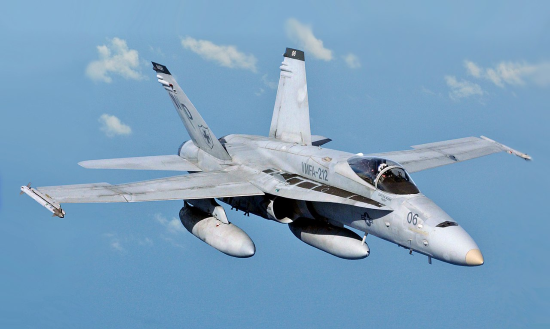
The F-16 Fighting Falcon (AKA ‘Viper’) can reach impressive top speeds just over Mach 1.7, which is just over 1,300 MPH!
The average cruising speed is 577 MPH.
That said, the F-18 Hornet can reach a top speed of Mach 1.8, which translates to 1,381 MPH.
The F-18’s cruising speed varies between 580 KTS at high altitudes, to 720 KTS at low altitudes.
In realistic flying conditions, such as getting to and from a target, the F-18 would get there slightly faster due to its higher cruising speed.
#2. Manufacturers
The F-16 Fighting Falcon, which is manufactured by General Dynamics and Lockheed Martin, is a single-engine multi-role fighter originally created for the US Air Force.
It was designed to be a day fighter but evolved to be a multi-tool of sorts, being used in whatever situation it was needed.
General Dynamics is the 4th largest military contractor in the world, and they have manufactured some very iconic weapons and aircraft used in warfare today.
They manufacture several types of aircraft, including the F-111 Aardvark.
They have been in business for 71 years, as they were founded in 1952.
McDonnell Douglas, on the other hand, was founded in 1967 but merged with their competitor, Boeing, in 1997.
Boeing was founded in 1916 and has become the second-largest military contractor in the world.
Nearly 50% of their revenue comes from domestic defense contracts, which amounts to around $62.2 billion per year.
They produce a massive variety of aircraft, including civilian passenger jets like the 747, 767, and 787.
They decided all civilian aircraft would start and end in a 7. They also make many bombers and fighter jets, including the B-52, F-15E, C-17, and KC-46A.
Boeing also works in aerospace, working with satellites and spacecraft.
Boeing also produces the latest missiles and unmanned vehicles for the U.S. government as well.
They are currently working on several experimental aircraft, pushing the boundaries of what we know today to even greater heights.
#3. Engines
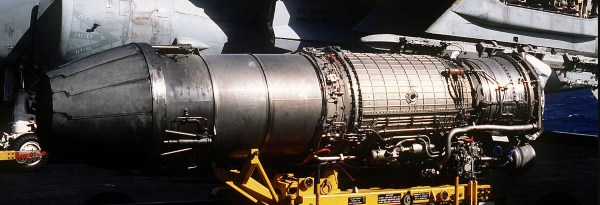
The F-16 Falcon is a single-engine jet, powered by a Pratt & Whitney F100-PW-220 or a General Electric F110 turbofan engine.
With after-burning, the powerful engine can create up to 29,000lbs of thrust (130 kilonewtons).
The F-18 is built differently, having dual engines.
These engines are the General Electric F404 turbofan engines.
They can each produce up to 17,700 lbs of thrust (80 kilonewtons) with the afterburner lit.
Together they can produce up to 35,000 lbs of thrust, more than the F-16.
However, due to the excess weight and aerodynamic drag of the F-18, the F-16 is often able to reach higher speeds.
With that said, since the F-18 has 2 engines, it gives it an advantage in the event of an engine failure.
If an F-16 experiences an engine failure, it will need to land immediately.
Related Article – Army Reserves Vs. National Guard
#4. Branches
The F-16 is primarily used by the US Air Force (Reserve and active duty), the Navy, as well as the National Guard.
The F-16 serves as a multi-purpose aircraft, being deployed in every theater of war the US has been involved in.
The F-16 is used to attack airfields, bunkers, and military production facilities and is armed with various payloads to better accomplish missions.
It is one of the cheaper fighter jets in the current lineup as of 2022.
The F-18, on the other hand, is currently utilized exclusively by the Navy and the Marine Corps.
They loved how universal the aircraft could be; being used for recon missions, bombing runs, air-to-air combat, and air-to-ground firing runs.
The F-18 is also coveted for its lower-than-average maintenance costs.
The B model has been used primarily for training missions, whereas the C model has been utilized more for real-world missions.
The F-18 D model is used by the US Navy and Marine Corps and is essentially a 2-seat model of the F/A-18C.
Another large reason this was chosen by the Marines and Navy is due to it being able to take off and land on an aircraft carrier.
The F-16’s landing gear cannot handle the stress involved in carrier-based operations and is confined to traditional runways.
Related Article – Navy Pilot Vs. Air Force Pilot
#5. Combat Roles
Both The F-16 and the F-18 can do varying mission types including air-to-air, air-to-ground, recon, and surveillance.
They have both been adopted to fulfill any necessary combat situations and are used in various environmental settings.
The F-18 has some advantages in combat that the F-16 cannot match. It has the ability to take off from aircraft carriers, allowing a more tactical insert into the battle-space.
In addition, the F-18 has a longer combat radius of 400 to 500 nautical miles, as opposed to the F-16’s combat radius of 296 nautical miles.
This aircraft, although it can do nearly any mission, has been used primarily for air-to-ground attacks, reconnaissance, and as a tool to hold the sky during combat times.
It is used in dog fights as well, but has a shorter ranged reconnaissance and air-to-ground fire runs.
The F-16 has a greater range by far when compared to the F-18, meaning it can stay in the air much longer without the need to refuel while accomplishing a mission.
It also can handle more G forces than the F-18, so it has the advantage in a dogfight. It has the ability to fly far and quickly, allowing a rapid takeover of the skies.
Through their differences, both of these aircraft are used widely as whatever is needed in the moment. They are capable of handling multiple mission types and different loads of ordinance, making them some of the most popular aircraft in the battle space today.
#6. Maneuverability
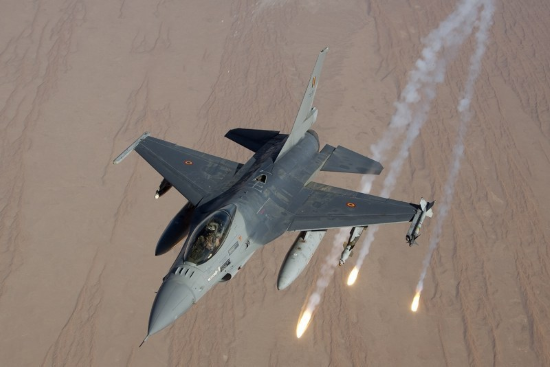
The F-16 Falcon can handle impressive 9G maneuvers in the air giving it the ability to quickly change course and leave other aircraft to struggle to keep up.
On the other hand, fhe F-18 Hornet is capable of handling 9G’s, but the US military limits it to 7.5 G’s.
While both aircraft are capable of insane turn rates / radius, the F-18 is more maneuverable then the F-16.
This is due to the F-18 having enlarged leading edge extensions, or LEX.
LEX’s provide improved lift in high angle of attack maneuvers, as well as reduce the static stability margin to enhance pitching characteristics.
The design of the F-18 makes it a formidable opponent in a dogfight due to its thrust-to-weight ratio as well as its dual engines.
This allows it to nearly perform the same maneuvers as the F-16 Falcon.
#7. Design
The F-16 Falcon Is a bit more compact when compared to the F-18 Hornet.
The F-16 has a length of 49 feet and 5 inches. Its wing span is 32 feet and 8 inches. This aircraft has a maximum takeoff weight of 37,500 lbs.
The F-18 comes in slightly larger at 56 feet long with a wingspan of 40 feet and 4 inches. It has a maximum takeoff weight of over 51,900 lbs.
The only thing about the F-16 that is larger than the F-18 is the height, it comes in just a few inches taller.
The reasoning behind the dimensions of these aircraft is for what their intended purpose was.
The F-16 is raw speed and power, able to be a smaller target and perform greater maneuvers.
The F-18 is more of a universal aircraft designed with two engines, making the weight and size of the craft larger than the single-engine comparison.
This can allow it to carry more firepower into a mission than the F-16, which in some cases would prove more valuable than the speed and size of the F-16.
#8. Cost
The F-16 costs roughly $35 million dollars per unit. The F-18 costs more than double at $67 million dollars.
You have to also think about the cost to keep these in the air when considering the price of these jets and the cost per hour to run an F-18 is $ $30,404.
This is most likely due to its dual engines eating fuel more rapidly than single engine aircraft.
The F-16 comes in a little cheaper at $26,927 per hour, proving this point further.
Considering overall cost, the F-18 is more to purchase and more to run.
This gets offset slightly due to the F-18’s renowned lower maintenance costs and easier access to vital internal components.
This means it is easier and quicker to make repairs and maintain vital components when compared to the F-16.
Less downtime on a piece of equipment in combat is easily worth paying more for in most cases.
#9. Dogfight Capabilities
The F-16 has a range of 1,000 miles without refueling, which is nearly twice that of the F-18, having only a range of 600 miles.
This means that the F-16 can travel much further from a base to accomplish a mission or stay in the fight longer than the F-18, which has more of a need to get in and out of the fight relatively quickly.
Also, the F-16 and reach G forces up to 9.0 and the F-18 can only reach up to 7.5.
This gives the F-16 the advantage in flight time, altitude, and maneuverability.
Due to the F-18 having two engines, if one is blown, it can limp its way back home. If the F-16 loses its only engine, the pilot will need to abandon the aircraft generally.
A downside of the F-16 is it cannot handle the forces of landing and take-off from an aircraft carrier.
This is something the F-18 has an advantage over. It may not fly as far, but it is more versatile.
The F-18 also carries a larger and more versatile array of weapons when compared to the F-16.
Overall, in a strict air-to-air dogfight, the F-16 would generally win.
However, when you need something that can do it all, carry more ordinance, and be more flexible on what it’s doing and where it is taking off from, the F-18 is going to be the aircraft of choice for most missions.
#10. Countries
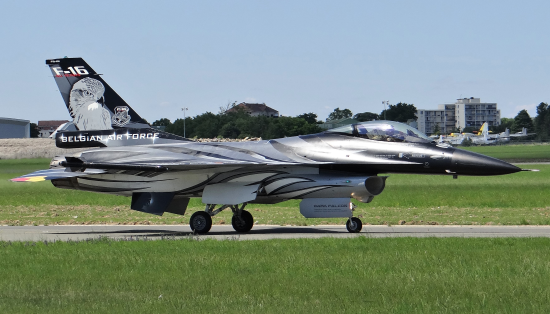
Both fighter jets are battle proven and have been in use for many years due to their tremendous capabilities.
They are both great aircraft for reconnaissance, dogfights, fire runs, and just as a presence to maintain control over the sky or a battle area.
The F-16 is widely known as a versatile, powerful, and most importantly, an affordable fighter jet and thus is used by many other countries around the world.
Users of this jet include: Bahrain, Belgium, Denmark, Egypt, Greece, Indonesia, Israel, Netherlands, Norway, Pakistan, South Korea, Poland, Portugal, Singapore, Taiwan, Thailand, Turkey, USA, and Venezuela.
The F-18 is more expensive, slightly newer, and less widely used.
This is largely due to it having more cost associated with the craft, but it is currently used by; Australia, Canada, Finland, Kuwait, Malaysia, Spain, Switzerland, and the US.
References / Resources
F-16 Fighting Falcon | Lockheed Martin
F-16 Fighting Falcon Air Force Fact Sheet
F/A-18 Super Hornet | Boeing Official Site
F-18 Performance / Specifications | NASA
See Also
12 Military Drones Employed By The US Military
- Ikon Pass Military Discount: Learn How To Save Big - January 31, 2025
- RTIC Military Discount: Find Out How To Save Big on Gear - January 30, 2025
- Traeger Military Discount: Learn How To Save Big on Smokers - January 28, 2025

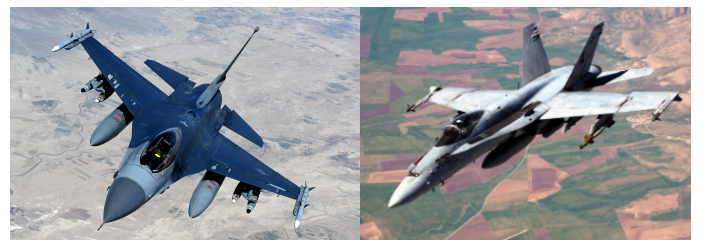

you have completely screwed up the speed comparison in comparison #1 on what planet is Mach 1.7 faster than Mach 1.8? wow. I wonder what other bum information you have here?
Read the whole paragraph, Jay. Here it is just in case:
Rob V.
OMK Owner / Founder
Clearly this article has referenced Wikipedia for information on the F404 Engine. I’m working on having the Wikipedia article corrected. For Started, the F404 Engine is not a “Turbo Fan” Engine as stated on Wikipedia. The F404 is actually a “Turbo Jet” Engine in fact the precise name is an “After Burning Turbo Jet Engine” The difference is not having an Afterburner or not. The Difference is that “Turbo Fan” Engines have a huge Fan at the front of the engine. This large fan delivers between 75% and 90% of the Thrust, where as a “Turbo Jet” engine delivers its thrust 100% via the exhaust nozzle. I want kids to have accurate information to work with. Wikipedia is a wonderful resource, I love it. but they guy who created the article on Wikipedia doesn’t seem to know a whole lot about Jet Engines, and so far no one has corrected him. which is surprising as it is not a new article. Wikipedia can be wrong, usually the age of the article is an indicated that it is probably more accurate because its had time for people to edit it, verify it etc.
I’m not sure that’s accurate, Jay. On the GE’s own website and fact sheet, they label the F404 engine as a ‘TurboFan Engine’.
Rob V.
OMK Owner / Founder